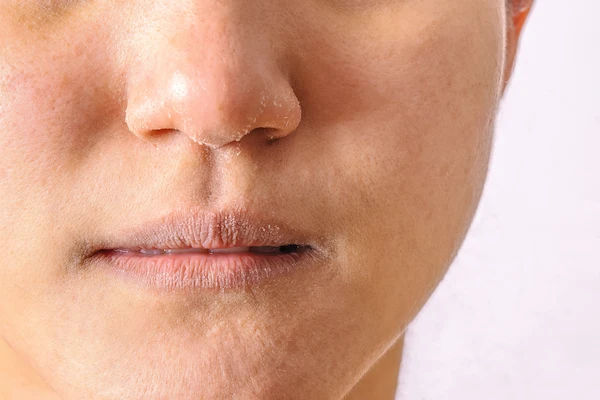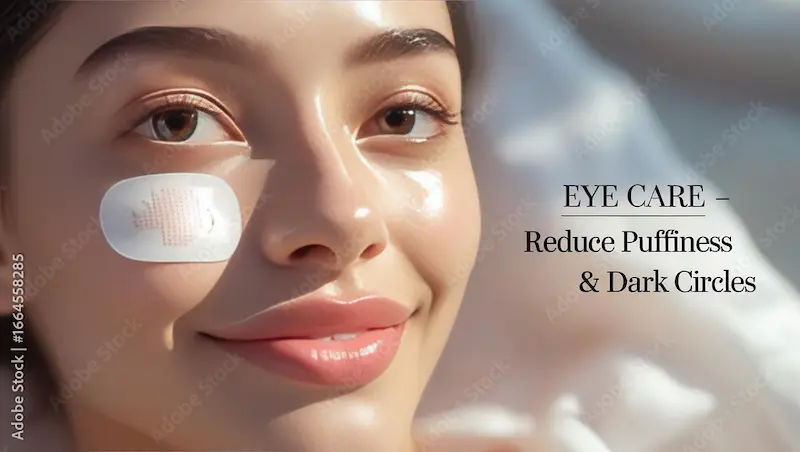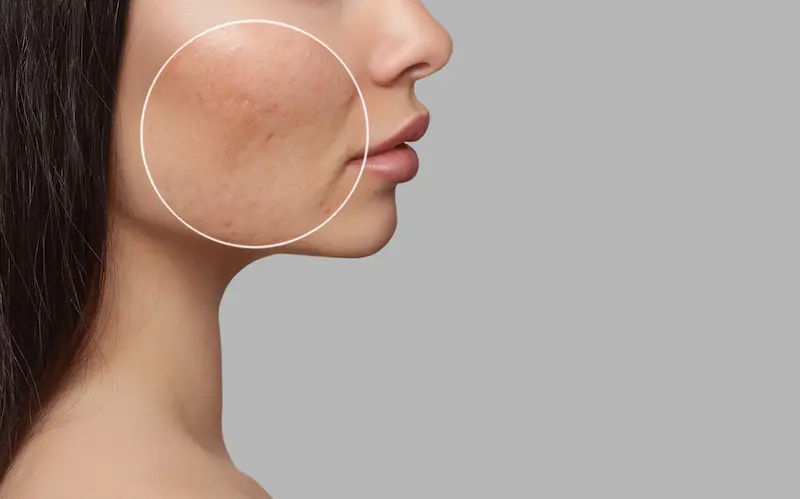Guide to How Can You Have Flawless Skin Summer
Achieve flawless skin this summer with expert tips on sun protection, hydration, light weight skincare routines, managing sweat, and preventing common warm-weather breakouts.


Introduction
Summer should feel like the season your skin shines—but heat, sweat, UV rays, and humidity can make “flawless” feel out of reach. The good news: with a few smart switches, you can keep skin calm, clear, and glowing all season. This complete guide distills dermatologist-backed essentials and real-world tweaks for the beach, the city, and everything in between. We’ll cover sunscreen mastery, the right cleanse-treat-moisturize routine for summer, how to prevent acne in hot, humid weather, ways to minimize pigmentation, and after-sun repair. You’ll also get sweat-proof makeup tips, hydration and nutrition pointers, and special advice for sensitive skin, men, and teens—plus when to see a doctor.
Know Your Summer Skin: Why the Season Changes Everything
Heat expands blood vessels and ramps up oil and sweat production; humidity reduces water loss but can trap sweat, oil, and debris on the surface. UV exposure increases pigment production (your tan is your skin’s damage response) and accelerates photoaging over time [9]. The result: many people feel shinier with more clogged pores in July, while others get tight, dehydrated skin from air-conditioning and frequent cleansing.
Skin type shifts:
• Oily/combination: Sebum rises in heat and humidity, making pores look larger and blackheads more obvious. Lightweight, non-comedogenic textures help.
• Dry/sensitive: Barrier disruption from sun, chlorinated pools, and over-cleansing can lead to tightness and redness. Focus on gentle surfactants and ceramide-rich hydration.
• Acne-prone: Sweat itself doesn’t cause acne, but occlusive products, friction (hat brims, helmet straps), and P. acnes-friendly conditions do. Sweat-plus-sunscreen needs smart cleansing and non-comedogenic picks.
Climate matters:
• Dry heat (desert, strong AC): Transepidermal water loss is higher; gel-cream moisturizers with humectants and light occlusives perform better.
• Monsoon humidity: Go lighter—hydrating serums under gel moisturizers; consider mineral or gel sunscreens that resist sweat.
Phototype and risk: Darker skin tones tan more readily and can develop post-inflammatory hyperpigmentation and melasma; lighter tones burn more easily. Everyone benefits from consistent SPF and shade-seeking. Knowing your UV index (UVI) can guide how often to reapply sunscreen at the beach and whether to add UPF clothing [8][9]. Unique insight: Think “seasonal minimalism”—fewer, smarter layers that breathe and resist sweat reduce pilling, clogged pores, and midday slickness.
Consult a Top Dermatologist
The Non-Negotiable: Sunscreen Mastery for Flawless Summer Skin
SPF basics:
• SPF measures UVB protection; UVA drives photoaging and contributes to cancer—look for “broad spectrum” on the label [1][7]. SPF 30 blocks about 97% of UVB; SPF 50 about 98%. The bigger difference is application amount and consistency—most people under-apply by 50% or more [1]. The Annals of Internal Medicine’s morning daily sunscreen trial showed reduced photoaging over time compared with discretionary use [4].
Filters and textures:
• Mineral (zinc oxide, titanium dioxide): Great for sensitive and acne-prone; modern micronized formulas can be sheer.
• Chemical (e.g., avobenzone, octocrylene): Often more elegant for deeper tones; many new gels/fluids feel weightless.
• Hybrid: Mix mineral/chemical for balance. For the best sunscreen for oily skin in summer, look for non-comedogenic, gel or water-based formulas.
Application:
• Face and neck: Two-finger rule (index + middle) or ~1/3 teaspoon. Body: ~1 ounce (a shot glass) for full coverage [1].
• Timing: Apply 15 minutes before sun. Reapply every two hours and after swimming/sweating (water-resistant means 40 or 80 minutes) [1][3][7].
• Tactics: Keep a travel-size SPF at hand for city commutes; use SPF stick around eyes/ears; set alarms for beach days. On makeup days, use an SPF spray or cushion for touch-ups (not perfect, but better than none).
• UVI smart: If UVI is 6+, combine shade, UPF clothing, hat, and sunglasses for true flawless skin in summer—less damage equals fewer lines and spots long-term [8][9]. Unique insight: Chill your sunscreen in the fridge before outdoor events—cool application reduces that “sticky” feel and calms skin on contact without affecting efficacy.
Build Your Summer Routine: Cleanse, Treat, Moisturize (and Protect)
Morning (simple and sweat-smart):
• Cleanse: If you wake up sweaty or oily, use a gentle gel or foam; otherwise, rinse with water to preserve the barrier. Consider micellar water on very humid mornings.
• Treat: Vitamin C serum for dull skin and antioxidant blends help neutralize free radicals from UV and pollution. Pick stable formulas (ascorbic acid 10–15% or derivatives if sensitive).
• Moisturize: Lightweight moisturizer with hyaluronic acid, glycerin, and/or squalane. If very oily, a hydrating serum plus sunscreen might be enough.
• Protect: Broad-spectrum SPF 30–50, as the last step. For melanin-rich skin, try sheer mineral or gel formulas to avoid cast.
Evening (repair-first):
Double cleanse on heavy SPF/makeup days: An oil or balm to break down water-resistant sunscreen, followed by a gentle cleanser. This prevents buildup without harsh scrubbing.
• Repair: Niacinamide (2–5%) can help regulate oil, refine pores, and even tone. Retinoids (retinol, adapalene) support collagen and unclog pores; start low-and-slow in summer to minimize irritation. Ceramides help rebuild barriers after sun, salt, and chlorine exposure.
• Moisturize: Gel-cream or light lotion. In dry heat, seal with a pea-sized drop of a light occlusive.
Frequency of actives:
• Exfoliation: Swap harsh scrubs for a mild BHA (salicylic acid 0.5 -- 2%) 1–3 nights weekly for oily/combination skin. Sensitive or dry types should limit acids; rely more on barrier care.
Unique insight: “Layering logic” to beat pilling—water-light serums, then gel moisturizers, then SPF; let each layer set 60–90 seconds. On humid days, drop a step rather than stacking too much.
Sweat, Acne, and Pores: Staying Clear Without Over-drying
Acne prevention in hot, humid weather centers on consistency and non-comedogenic choices. Daily benzoyl peroxide (2.5–5%) in a short-contact wash can reduce P. acnes without bleaching towels; salicylic acid unclogs pores; adapalene gel supports long-term control [2]. Keep textures featherweight; look for “non-comedogenic sunscreen recommendations.”
Workout routine:
• Before: Remove makeup; apply a light, breathable sunscreen if outdoors.
• After: Rinse sweat promptly; use a gentle cleanser. Consider a mild salicylic body wash for chest/back 2–3 times weekly.
• Clothing: Quick-dry, breathable fabrics reduce friction acne. Wash hats/helmet liners often.
Body acne/folliculitis:
• Chlorine and tight swimwear can irritate follicles. Shower after swimming; use benzoyl peroxide wash on affected areas. If bumps persist or worsen, consider that it may be fungal folliculitis—see a clinician.
Unique insight: Friction mapping—note where straps, collars, or mask edges rub; dab a thin film of gel moisturizer or silicone-based primer there before SPF to reduce mechanical irritation without clogging. If your condition does not improve after trying these methods, book a physical visit to a doctor with Apollo 24|7 or consult a doctor online for tailored acne care.
H2: Pigmentation, Melasma, and the Summer Glow
Pigment pathways are triggered by UV and heat—both matter. The best brightening strategy is prevention plus gentle, consistent topical care.
• Prevention: Broad-spectrum SPF, shade, hats; remember UVA penetrates glass—daily protection counts [1][7].
• Brighteners: Niacinamide for summer pigmentation can help even tone; vitamin C and azelaic acid support brightness and calm inflammation. If you use retinoids, keep them at night and buffer with moisturizer to reduce irritation (which can worsen post-inflammatory hyperpigmentation).
• Acids: Lactic or mandelic acid 1–3 times weekly can polish dullness with less irritation than glycolic for many. Always pair with SPF.
Melasma specifics:
Focus on strict sun and heat avoidance (seek shade, hats, avoid hot yoga/saunas).
Use pigment modulators like azelaic acid 15–20% or niacinamide; consult a dermatologist for hydroquinone cycles or tranexamic acid if needed.
Unique insight: “Cool the canvas”—post-sun, use a cool (not ice-cold) thermal water mist followed by a ceramide moisturizer to tamp down heat signaling that can exacerbate melasma. If dark patches spread rapidly or don’t respond after 8–12 weeks, consult a doctor online with Apollo 24|7 for further evaluation.
Body, Scalp, and Lips: The Forgotten Zones
Body:
• Sunscreen matters as much on shoulders, back, and legs—these areas see high UV at the beach. Use sprays for convenience, but rub them in to ensure even coverage [1][3].
• Heat rash (prickly heat): Appears as small, itchy bumps in occluded, sweaty areas. Keep cool/dry, wear loose cotton, use calamine or hydrocortisone short-term, and avoid heavy occlusives. Most cases resolve with cooling and dryness; seek care if there’s pain, pus, fever, or rash persists [5].
Scalp:
• Part lines burn easily—use powder SPF, spray, or a hat. For hairline breakouts, cleanse gently after SPF application and avoid heavy pomades.
Hands/lips/ears:
• Use stick sunscreen over ears and around eyes; apply SPF lip balm and reapply often after eating/drinking. Hands age fast—keep a small SPF in your bag and reapply after washing.
Unique insight: “Sunscreen sandwich” for hands—quick layer of hand cream, SPF on top, then tiny dab of hand cream to reduce the chalky look while preserving protection.
Lifestyle Levers: Hydration, Nutrition, Sleep, and Stress
Hydration tips for glowing skin:
• Fluids: Aim for regular intake rather than large, infrequent gulps. Add electrolytes on very hot days or heavy activity.
• High-water foods: Watermelon, cucumber, citrus, tomatoes, yogurt-based dips—easy ways to add fluid and antioxidants.
Nutrition:
• Antioxidant-dense: Berries, leafy greens, tomatoes (lycopene), green tea support skin’s oxidative defenses alongside sunscreen.
• Omega-3s: Fatty fish, walnuts may support barrier function.
Sleep/stress:
• Consistent sleep supports repair pathways (collagen, barrier lipids). Short mindfulness breaks reduce stress-driven flares (acne, eczema).
Vitamin D and sunscreen:
Concerned about vitamin D? Routine, sensible sun is not a reliable or safe strategy. Diet and supplements maintain levels without skin damage; multiple reviews suggest daily sunscreen use has minimal impact on vitamin D status in real-world use [7]. If you’re worried, Apollo 24|7 offers a convenient home collection for tests like vitamin D to check your status.
Unique insight: “Hydration stacking”—a hydrating serum on damp skin plus a water-rich snack (like citrus + yogurt) before heading out can help you feel and look dewy without over-moisturizing in humidity.
Special Situations: Sensitive Skin, Kids, Teens, Pregnancy, Men
Sensitive or eczema-prone:
Choose fragrance-free, mineral sunscreens; gentle gel-cream moisturizers with ceramides; avoid over-exfoliation. Patch test new activities.
Teens:
Keep it simple: salicylic acid wash, non-comedogenic moisturizer, broad-spectrum SPF. Spot-treat with benzoyl peroxide; introduce adapalene if breakouts persist [2]. If symptoms persist beyond two weeks, consult a doctor online with Apollo 24|7.
Pregnancy:
Skip high-dose retinoids; consider azelaic acid, vitamin C, and niacinamide for brightening. Choose mineral SPF. For melasma, prioritize shade and gentle care.
Men:
Summer skincare routine for men can be one bottle per step: gel cleanser, gel moisturizer with niacinamide, and an SPF gel or fluid. Shaving? Apply SPF 15–20 minutes after shaving to reduce sting.
Kids:
Hats, UPF clothing, shade first. Use mineral SPF; reapply diligently, especially during water play.
Unique insight: Razor + summer: Switch to a single pass with a sharp blade and shave after showering; layer a light, alcohol-free splash, then moisturizer, then sunscreen to reduce razor burn in heat.
Your Field Guide: City Day, Office Day, Beach Day, Travel
5-minute city routine:
Cleanse (or rinse), vitamin C, gel moisturizer, SPF 50, tinted balm. Midday: SPF stick for high points (nose, cheekbones).
Office day:
AC can dehydrate. Keep a hydrating mist (alcohol-free) and reapply sunscreen before lunch walk.
Beach and pool:
Pre-apply 15–20 minutes before exposure; use water-resistant SPF 50; reapply every 2 hours and after swimming. Wear UPF rash guard to reduce reapplication burden. Bring a powder SPF for scalp parting and an SPF stick for ears. After-sun: Rinse off salt/chlorine, use a ceramide moisturizer, and a cool compress for hot spots.
Travel:
Plane: Skip heavy activities; hydrate skin; SPF if near windows. Destination: Pack minis—gel cleanser, vitamin C, niacinamide, gel-cream, SPF stick + lotion, lip SPF. For how often to reapply sunscreen at the beach: set a phone timer every 2 hours.
Unique insight: “SPF split-apply”—half your dose 10 minutes before you leave, half right before stepping into strong sun; this improves evenness and coverage without feeling heavy.
When to Get Help (and What to Ask)
Seek care if you have:
• A new or changing mole, a non-healing spot, or blistering sunburn [1][8].
• Acne that scars or persists despite 8–12 weeks of consistent care.
• Worsening melasma, recurrent heat rash with pain or fever, or suspected infections.
Online or in-person: If symptoms persist beyond two weeks, consult a doctor online with Apollo 24|7 for further evaluation. For stubborn acne or pigmentation, a dermatologist can tailor prescriptions (e.g., retinoids, azelaic acid, short hydroquinone cycles) and procedures (chemical peels in appropriate seasons, laser precautions). If lab tests are relevant (e.g., vitamin D, ferritin in hair shedding), Apollo 24|7 offers a convenient home collection.
Conclusion (200–250 words)
Summer can bring out your best—or your most frustrated—skin. The difference rarely lies in a trendy product and almost always in consistent, smart habits. Start with sunscreen mastery: pick a texture you love, apply enough, and reapply on a schedule. Simplify your routine with breathable layers—cleanse wisely, nourish with antioxidants in the morning, and repair at night with barrier-friendly ingredients. For breakouts, stick with proven basics like salicylic acid, benzoyl peroxide, and adapalene, and keep sweat and friction in check. For pigment, combine vigilant UV and heat avoidance with gentle brighteners like niacinamide, vitamin C, and azelaic acid.
Remember the forgotten zones—scalp, ears, lips, hands—and choose UPF clothing when you can to reduce your reliance on constant reapplication. Support your skin from within with hydration, sleep, and antioxidant-rich foods, and don’t rely on unprotected sun for vitamin D; test and supplement if needed. If rashes, acne, or dark patches persist or worsen, consult a doctor online with Apollo 24|7 for guidance tailored to your skin and climate.
Make this the summer you practice seasonal minimalism: fewer steps, better textures, and UV-smart habits. Your reward? Comfortable, calm, and truly flawless skin all season—without the stress.Consult a Top Dermatologist
Consult a Top Dermatologist

Dr. Bhavya Swarnkar
Dermatologist
14 Years • MBBS, MD, DNB (Dermatology, Venereology & Leprosy) Former Senior Resident, Department of Dermatology- AIIMS, New Delhi. Associate Consultant - Dermatology.
Bilaspur
Apollo Hospitals Seepat Road, Bilaspur
(225+ Patients)

Dr. S Madhuri
Dermatologist
10 Years • MBBS, MD. DVL, DNB, Fellow (Dermatosurgery & Lasers)
Secunderabad
Apollo Hospitals Secunderabad, Secunderabad
(425+ Patients)

Dr. Parul Gohil
Dermatologist
5 Years • MBBS, MD(DERMATOLOGY,VENEREOLOGY & LEPROSY)
Bengaluru
Apollo Clinic, JP nagar, Bengaluru

Dr. Madhab Datta
Dermatologist
5 Years • MBBS, MD (DVL)
Kolkata
Dr. Madhab Datta's Clinic, Kolkata

Dr. Somshukla Ray
Dermatologist
10 Years • MBBS, MD (Dermatology,Venerology & Leprosy), DNB (Dermatology,Venerology & Leprosy)
Kolkata
MCR SUPER SPECIALITY POLY CLINIC & PATHOLOGY, Kolkata
Consult a Top Dermatologist

Dr. Bhavya Swarnkar
Dermatologist
14 Years • MBBS, MD, DNB (Dermatology, Venereology & Leprosy) Former Senior Resident, Department of Dermatology- AIIMS, New Delhi. Associate Consultant - Dermatology.
Bilaspur
Apollo Hospitals Seepat Road, Bilaspur
(225+ Patients)

Dr. S Madhuri
Dermatologist
10 Years • MBBS, MD. DVL, DNB, Fellow (Dermatosurgery & Lasers)
Secunderabad
Apollo Hospitals Secunderabad, Secunderabad
(425+ Patients)

Dr. Parul Gohil
Dermatologist
5 Years • MBBS, MD(DERMATOLOGY,VENEREOLOGY & LEPROSY)
Bengaluru
Apollo Clinic, JP nagar, Bengaluru

Dr. Madhab Datta
Dermatologist
5 Years • MBBS, MD (DVL)
Kolkata
Dr. Madhab Datta's Clinic, Kolkata

Dr. Somshukla Ray
Dermatologist
10 Years • MBBS, MD (Dermatology,Venerology & Leprosy), DNB (Dermatology,Venerology & Leprosy)
Kolkata
MCR SUPER SPECIALITY POLY CLINIC & PATHOLOGY, Kolkata
More articles from Skin Care
Frequently Asked Questions
1) What SPF is best for daily summer use?
Broad-spectrum SPF 30–50 is ideal. For beach days or prolonged outdoor time, go SPF 50 and reapply every 2 hours. Choose non-comedogenic formulas for oily or acne-prone skin.
2) How can I prevent acne in hot humid weather?
Use a salicylic acid cleanser, lightweight moisturizer, and a non-comedogenic sunscreen. Rinse sweat promptly after workouts, and consider adapalene at night. If breakouts persist, consult a doctor online with Apollo 24|7.
3) What’s better for pigmentation in summer: vitamin C or niacinamide?
Both help. Vitamin C serum for dull skin supports antioxidant defense; niacinamide for summer pigmentation can calm inflammation and even tone. Use them with daily SPF and consider azelaic acid if you’re sensitive to stronger activities.
4) How do I treat heat rash at home?
Keep cool and dry, wear loose cotton, and use calamine or a short course of low-strength hydrocortisone. Avoid heavy ointments in the rash area. If symptoms don’t improve, book a physical visit to a doctor with Apollo 24|7.
5) Does sunscreen lower vitamin D?
Real-world data suggest daily sunscreen has minimal impact on vitamin D status when used normally. If you’re concerned, Apollo 24|7 offers a convenient home collection for tests like vitamin D.




